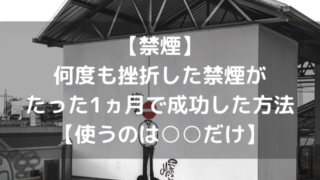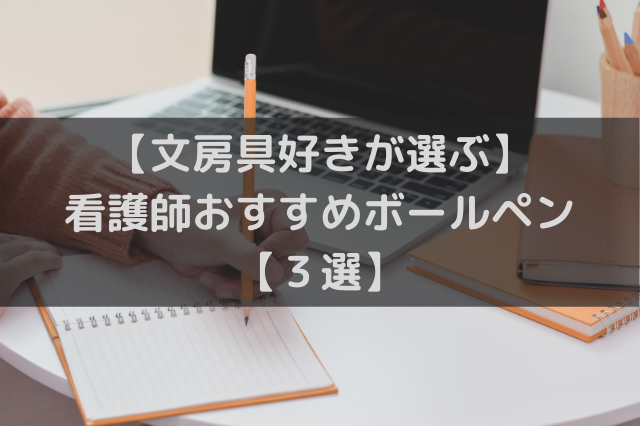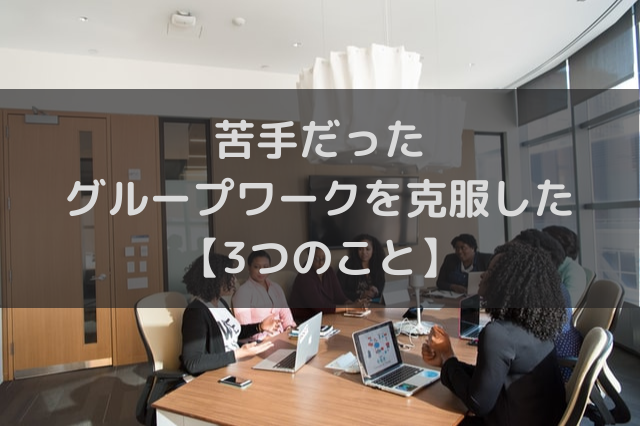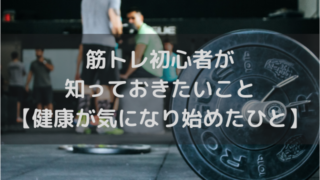Formula: P(Power) = I(current) * U(Voltage). The amount of time spent in this stage will depend on how discharged your battery was when you started charging it. Basically, these types of chargers are safe, easy to use, and will not overcharge your battery. But like all things, batteries dont last forever and they need to be regularly charged in order to keep them working properly.There are a few different ways to charge a battery, depending on the type of battery it is. Its important to note that not all chargers have all three stages some onlyhave two (CC and CV) while others may only have one (constant current). Many chargers have multiple stages, which can be useful for charging different types of batteries.For example, some chargers have a special stage for NiCad batteries, which need to be charged slowly to avoid damage. Lead acid is sluggish and cannot be charged as quickly as other battery systems. They allow us to store energy so that we can use it when we need it. For lead-acid batteries, this stage usually takes place at around 13.8V. Smart 3-stages of charging algorithm is improved to better charge and maintain battery at a stable level for extended battery life. Lithium batteries have 3 stages of charging, usually divided into these three stages: Constant Current Pre-charge Mode Constant Current Regulation Mode Constant Voltage Regulation Mode Sounds similar to a Lead-acid battery? The Power Facts is reader-supported. The first step is to find a compatible charger.Make sure that the charger youre using is designed for the specific type of battery you have. The charger applies maximum current until the battery voltage reaches the bulk voltage threshold. Bulk stage. This final stage helps to prevent any potential issues that could occur if your battery were allowed to sit completely discharged for an extended period of time. The downside of slow charging is that it can take up to 12 hours to fully charge a battery.So if you need a quick boost, slow charging isnt ideal. The current is held constant against the rising internal resistance to charge current by raising the battery voltage. Batteries have come a long way in recent years. 6 - Bulk Chargingis the first stage in which the charger identifies the battery and its needs, then applies a high voltage/amperage charge to do the bulk of the charging. The best way to charge a car battery is by using a professional service like AAA or Roadside Assistance.They have special equipment that will safely and quickly charge your battery without damaging your cars electrical system. There is no risk of overcharging in this stage because the battery hasn't even reached full yet. Float charging is the fourth and final stage of battery charging.Here, batteries are maintained at a full charge by supplying just enough current to offset self-discharge losses. BatteryStuff Tech If you are looking for the charging profile for an AGM battery I would refer you to the manufacturer of the battery you are trying to charge. It charges batteries by supplying a constant current to the batteries until they are fully charged.The advantage of this type of charger is that it is simple to use and does not require any special equipment. Sharat Simple and informative. Sometimes we feel like a broken old record player when we talk about battery chargers. This allows for a slower and more controlled charge that wont damage delicate battery components.Once absorption is complete, most chargers will move on to the float stage. This will ensure that your battery will be ready to start whenever you are. The analysis and development of charging strategies for Li-ion battery play a vital role in operation management especially for electrical vehicle applications . During this phase,the cells in the battery finish filling up with electrons and reach their peak voltage. The four stages are: bulk, absorption, float and equalization. Many devices now come with a USB port that can be used to charge the battery. :). What are the 6 Stages of Battery Charging? This includes things like USB cables and headphones.Once your device is disconnected from any accessories, go ahead and plug in the charger. Constant current charging is when the majority of the charge is applied to the battery. Can I use lights(12v) and a water pump (12v) etc in this circuit without interrupting the charger? Not only are Superchargers considered the most extensive and reliable charging network in the U.S. today with over 12,000 charging stalls across the country but they're also easy to . Use the link below to browse our selection of smart changers and 12v/24v trickle chargers. Bulk Charging Voltage For lead-acid batteries, the initial bulk charging stage delivers the maximum allowable current into the solar battery to bring it up to a state of charge of approximately 80 to 90%. Over the years, many charging algorithm are developed to improve the charging method of lead acid battery. The anode is mainly made of graphite, and both are immersed in the electrolyte. The flow of the proposed study is as follows: Section 2 deals with the EV power components, Section 3 illustrates Let's find out by going through each stage, one by one. [1][3] For temperatures that deviate more than about 5C (10F), a correction should be applied of 5mV/C (2.8 mV/F) per cell[1] or 0.03V/C (17 mV/F) for a 12 V (6-cell) battery (higher voltages at lower temperatures and vice versa). For instance, the last remaining 20% of the battery takes much longer when compared to the first 20% during the bulk stage. The three stages of battery charging are bulk, absorption, float, and equalization. (See BU-202: New Lead Acid Systems) With the CCCV method, lead acid batteries are charged in three stages, which are [1] constant-current charge, [2] topping charge and [3] float charge. Abdul Khan Thanx a alot and the time? What are 3-stage, 6-stage, & 9-stage battery chargers? Once the bulk charge is complete, the charger switches to an absorption mode where it slowly reduces the voltage while maintaining the current, allowing the battery to become fully saturated. You can leave it plugged in indefinitely without having to worry about it! The three main types of electric vehicle charging are slow, fast, and rapid. Finally, once the battery is fully charged, the charger goes into float mode. However, the disadvantage is that it can overcharge batteries if left unattended. We've said it before and we'll say it again. In the bulk stage, the charger supplies the maximum charge current that the battery can accept. However, there are still some basic rules that apply when it comes to charging your battery.These rules are important to follow in order to prolong the life of your battery and keep it working properly. The lower current going into the battery safely brings up the charge on the battery without overheating it. What makes these chargers so different and efficient? Here is the simple explanation.In this video, I will describe the 3 stages of . The proposed work classifies battery-charging topologies based on the power and charging stages. Once the battery has reached 80%* state of charge, the charger will enter the absorption stage. 3 stage chargers work and they work well. In this stage, also known as maintenance or trickle charging, the charger maintains a constant voltage on the battery without supplying any current.This keeps the battery at 100% charge without overcharging it. The purpose of this stage is to slowly top off the battery so it doesnt overcharge and become damaged. The three most common types of batteries are lead-acid, lithium-ion, and nickel-cadmium. The third and final stage is called the trickle charge stage. This keeps them ready for use and extends their life by preventing self-discharge. To jump-start your car, you will need to connect the jump leads from another vehicle to your car . During this phase, the charge current decreases gradually to a small residual value that compensates for any self-discharge of the battery. The level of charge that can be applied without overheating the battery is known as the battery's natural absorption rate. When I plug it in, initially, the charger works as it should through all 3 phases. This is the first time Ive needed to charge the car battery (I let the car sit for 2 months) The faulty battery light is not on, but Im wondering if there really is something wrong? The voltage across the battery begins to rise during this stage as it fills up with electrical potential energy. When the battery is not in use, the electrodes are still separated by the electrolyte, but there is no path for the electrons to flow.To charge a battery, we must provide a path for the electrons to flow from the positive to the negative electrode. If it is a 1000mAh battery, 1C means the charging current is 1A; for a 2000mAh battery, 1C means the charging current is 2A, and so on. This ensures that all the cells in the battery are equally charged. The current continuously declines until the battery almost reaches full capacity. The battery charging process can be broken down into four distinct stages: pre-charging, bulk charging, absorption charging, and float charging. During this phase, the voltage of the battery is slowly increased in order to prepare it for the main charge phase. Without knowing all the details, as long as the system is a 24v system and the charger is sized correctly, should be good. We now have access to faster-charging methods that can get our devices back up and running in no time. For a typical 12 volt AGM battery, the charging voltage going into a battery will reach 14.6-14.8 volts, while flooded batteries can be even higher. Stage 3 is called the U-phase or float charge state, the voltage is reduced to a value that is safe to be applied for long periods (weeks) without significantly reducing the lifetime of the battery. For the gel battery, the voltage should be no more than 14.2-14.3 volts. As you might . This helps to prolong the life of your battery by reducing stress on the cells and minimizing damage caused by heat build-up.The second stage is referred to as the constant current or CC phase.In this stage, a constant current is applied to the battery in order to charge it as quickly as possible without damaging it. It's essentially the float stage where there is charge going into the battery at all times, but only at a safe rate to ensure a full state of charge and nothing more. What are the 5 Stages of a Battery Charging? Lithium batteries are divided into an anode (the negative pole) and a cathode (the positive pole). But here's the million-dollar question: What are the 3 stages? The second method is called fast charging. In stage two, known as constant voltage charging, the voltage is kept at a set level while the current decreases as the battery become full. action is applied - a slow charge current is applied to the battery then ramps up over time. This charges the battery slowly, over a period of 6 to 8 hours.Fast charging can charge a battery in 1 to 3 hours, using a 240-volt outlet similar to what is used for large appliances like clothes dryers. Wireless charging is becoming more popular as its a convenient way to keep your devices charged without having to fumble with cords. Save my name, email, and website in this browser for the next time I comment. very good explanation, thank you. However in a manual setup, I would refer to the manufacturer to be sure you program the charger to their specifications. Equalization is a periodic overcharging of lead acid batteries that helps to restore capacity and prolong service life.It should only be done with careful monitoring to avoid damaging the cells. To improve the charging method a simple battery charging algorithm is proposed in this paper. Moreover, what exactly is quick charge and how can it make your battery be charged faster? Please help explain the 4th stage. thanks!!! The four stages of battery charging are constant current, constant voltage, trickle charge, and float charge. You don't ever have to worry about leaving the charger on the battery for too long. This stage typically lasts for about two hours.Trickle charge is when the charger supplies a very small amount of current to top off the battery after it has already been charged. This phase occurs when an IUoU charger is connected to a deeply discharged battery. The charging process can be done with alternating current (AC) or direct current (DC). Read our blog post on whether you need to upgrade your battery charger if you switch to lithium batteries. As the name states, there are three stages in this charger: bulk, absorption, and float. This ensures that the battery remains topped off and ready for use. This stage can last for several hours and might not be necessary if youre using a new battery for the first time.After pre-charging is complete, constant current charging begins. There are four stages to battery charging: bulk, absorption, float, and equalization. As technology advances, the way we charge our devices is also changing. Other features. 5 -TheReconditioning Cyclehelps to desulfate the battery and finalizes the charge. During pre-charging, also known as conditioning or formation charge, very little current is sent through the battery in order to prevent damage to its delicate structure. Should contain only letters, numbers, and (' - .)! For a more comprehensive overview of battery safety we suggest reviewing both of the below: Or are you trying to prolong the life of your batteries? Again, check your owners manual for specific details on how to activate this feature, if available. Buying one of these 6S 10000mAh battery is way cheaper than buying 9 or 10 of the smaller packs, you can potentially save 40-50%. That's where the term "trickle charger" comes from. The three stages of battery charging are bulk, absorption, float, and equalization. The amount of time spent in this stage will depend on how discharged your battery was when you started charging it.The third stage is called constant voltage or CV for short.In this stage, the voltage of the battery is held at a constant level while the current gradually decreases. All Rights Reserved. Level 2, 40 amperes, 10kW EV charging station. If the charger is a 10-amp charger, and if the battery resistance allows for it, the charger will put out a full 10 amps. Trickle chargers are the most basic type of charger, and they work by slowly supplying a small amount of current to the battery.This is the safest type of charger, but it can take a long time to fully charge a battery. A 2000mAh battery can take around 4 hours to charge.Second, never leave your battery unattended while it is charging. - See more at: https://www.aussiebatteries.com.au/blog/which-deep-cycle-battery-charger-do-i-need/#sthash.fOWlAcFA.dpuf, upgrade your battery charger if you switch to lithium batteries. That is why we only stock the iTechworld 20 Amp 3 Stage Battery Charger. Some chargers may have an Equalize button which forces periodic deep charges to prevent sulfation buildup on lead-acid batteries if your charger has this feature, consult your owners manual for instructions on how often to use it.Finally, once all other stages are complete, some chargers will enter an equalization stage. This final stage helps to prevent any potential issues that could occur if your battery were allowed to sit completely discharged for an extended period of time. To use this method, simply plug your device into a USB port on your computer or other power source. Once the battery reaches its full capacity, it will stop accepting any more power from the charger and enter standby mode. Thanks Nathan So I recently installed my 3 stage charger into my LiFePO4 battery bank in my RV. In Part 1 of this series, we introduced the battery management system (BMS) and explained the battery modeling process. In the pre-charge phase, the battery is charged at a low-rate (typical of 1/10 the Constant Current Regulation Mode) when the battery cell voltage is below 3.0 V. This provides recovery of the passivating layer which might be dissolved after prolonged storage in deep discharge state, also prevents overheating at 1C charge when partial copper decomposition appears on anode-shorted cells on over-discharge. Click the following link to view our latest range of lithium battery chargers. The IC (UC3906) is the core of the . Is it really worth it? Something different. Is it not designed to go backwards? Another option is to use a portable charger that you can plug into your cigarette lighter socket.These chargers are much faster than using a household outlet, and theyre great for emergency situations. The most common way to charge devices is via USB. A typical lithium-ion battery has four cell types: an anode, a cathode, a separator, and an electrolyte.The anode is the negative terminal and the cathode is the positive terminal. The standard charger that comes with most electronics uses a constant current to charge the battery.This is the quickest way to charge a battery, but it can also be damaging if the battery is not properly monitored. A decision-making flowchart further aids in selecting suitable battery chargers for desired applications. Venuu Very nice article informative!!! The iTechworld 20A Battery Charger can be attached to the battery indefinitely if required without risk of over or under charging. This happens right before the battery is fully charged so that overcharging does not occur. Let's discuss each stage. The current then starts to decrease as the battery becomes full.Once the battery is almost full, the charger enters into float charge mode. Trickle charging happens after a lithium-ion battery has been fully charged and it just gives it a small amount of current so that self-discharge does not happen. What are the 3 Stages of Battery Charging? These are the bulk stage, absorption stage, float stage, and equalization stage. This involves quickly charging the battery so that it can be used immediately.Fast chargers are often used in emergency situations where the battery needs to be quickly recharged. This is a great option if youre outdoors and have access to sunlight, but its not very practical for everyday use. To slow charge a battery, simply connect it to a power source and let it charge overnight. Editor, Blogger Industrial Battery Manufacturer Marketing, SEO, Advertising. This stage typically leaves the batteries at 75% to 90% of their capacity. Finally, there are wireless chargers that use inductive charging to transfer energy from one device to another without any physical contact between them.These are becoming more popular as they eliminate the need for messy wires, but theyre not always as reliable as other methods. During this phase, the charge current decreases gradually to a small residual value that compensates for any self-discharge of the battery. A rapid charger is used to charge batteries quickly, and is often used in industrial applications.A solar charger uses sunlight to recharge a battery, and is a great option for those who want to be environmentally friendly. P.S. This is sometimes known as the "cool-down" cycle. During charging, due to the effect of the electric field, lithium ions move from the positive pole to the negative pole and store energy; during discharge, lithium ions move from the negative to the positive under the action of a chemical reaction, at which time a current is supplied to the power supply. Pre-charging is the stage where the battery charger supplies a low current to the battery to help reduce sulfation. Please enable JavaScript in your browser for better use of the website! BatteryStuff Tech There is no black and white answer, as it really depends on the manufacturer, and what they consider a stage to be. A 3 Stage Battery Charge Controller relies on microprocessors to regulate battery charging VOLTAGE and CURRENT. This step is skipped if the battery does not require it. It accomplishes this by maintaining a constant relatively high current. 7 - Absorption Chargingis when the battery has reached ~80% of its capacity and begins to lower the input current to the battery. if(typeof ez_ad_units!='undefined'){ez_ad_units.push([[300,250],'thepowerfacts_com-box-3','ezslot_6',186,'0','0'])};__ez_fad_position('div-gpt-ad-thepowerfacts_com-box-3-0');The three main types of battery charging are constant current charging, constant voltage charging, and pulse width modulation. This is assuming that the depth of discharge is 50%. I'm using a PowerMax 30A charger. But here's the million-dollar question: What are the 3 stages? These pulses raise the temperature of the battery, which speeds up the chemical reactions taking place inside it. This first stage is typically where the highest voltage and amperage the charger is rated for will actually be used. Thank you. The reason is lithium's sit at a higher voltage than lead acid batteries, so in affect it doesn't know when to restart the charging cycle for your batteries. The most common type of battery is a lead-acid battery, which is typically found in cars. Uncontrolled charging of lead acid battery may lead to capacity loss and also reduce the life cycle of battery. Therefore, if you want to increase the charging speed, it is the best way to optimize it is at the next stage: Constant Current Regulation Mode. Maintaining a constant voltage gradually reduces the current until it reaches around 0.1 C, at which point charging is terminated. A battery charger is a device that charges batteries. After initializing a new lead acid battery or deep cycling an older one, its important to perform regular maintenance charges in order to keep it healthy and prevent sulfation from occurring. This will ensure that your battery will be ready to start whenever you are. Do LiFePO4 batteries need a special charger Save my name, email, and website in this browser for the next time I comment. This high-voltage charge helps break down these deposits and restore full capacity to the battery. Cable. Solar Energy & Electronic Technology 16.5K subscribers 12K views 4 years ago You may have heard it said "you need a 3 stage charger". Knowing how many Amp hours your deep cycle battery stores allows you to work out what kind of charger youll need and approximately how long the charge will take. If the charger is a 10 amp charger, and if the battery resistance allows for it, the charger will put out a full 10 amps. There are three main stages to charging a battery: constant current, constant voltage, and float charge. A battery charger is a device used to put energy into a secondary cell or rechargeable battery by forcing an electric current through it. Although the number of stages can vary depending on the type of battery, most batteries will go through four distinct phases when being charged.The first stage of battery charging is known as the pre-charge phaseDuring this phase, the voltage of the battery is slowly increased in order to prepare it for the main charge phase. BatteryStuff Tech Generally there is no need to remove the caps unless you are checking the water level in the battery. *Actual state of charge Absorption Stage will enter will vary from charger to charger. The battery is charged at maximum current using. BatteryStuff Tech Unfortunately, we do not carry the Shop Force brand chargers so I'm unable to advise. Vishu very good information its helps for new buyer s. Vikram Singh Very simple , clear and communicating language. The separator is a thin membrane that prevents the two electrodes from coming into contact with each other. Trickle charging is used when a lead acid battery needs to be kept charged but will not be used for extended periods of time (e .g., storage). Three stage charging is the method most lead acid battery manufacturers recommend as the best and most efficient way to return full capacity to the battery and extend battery life. I have to physically unplug the charger and presto is starts back in the phase I need based off the condition of the battery? . Rob Moir Im just wondering if you can pull power while this is in use? Constant Voltage Charge (CV) In the second stage of charging, known as CV, or constant voltage, the voltage is increased while the current is decreased. All Chargetek lead acid chargers except the CT150 (which is a maintenance charger) are three stage chargers and return full capacity. ive been trying to find out why my battery is still stuck on float mode for 3 days now and wont go into pulse mode, now I know why, thank you for this info, its put my mind at wrest, I was told that it could take up to 10 days. It might seem strange to recommend a reboot . The absorption stage typically lasts for around another hour. This creates a potential difference between the two electrodes, which we call voltage.When we apply a voltage to the battery (by connecting it to a charger), this reverses the flow of electrons and they flow from the positive to the negative electrode. But how do batteries work? I would suggest pulling a manual from manufacturers website or contact the dealer you purchased the charger from directly. The battery is typically charged at a constant current of 0.5 C or less until the battery voltage reaches 4.1 or 4.2 V (depending on the exact electrochemistry, around the 80% fulfilled of the battery). Also how do i tell when i need to add distilled water Thanks a bunch. The Three Stages of Battery Charging A battery charger is a device used to put energy into a secondary cell or rechargeable battery by forcing an electric current through it. How does a battery charger or charge controller recharge a lead acid battery? What are the Two Types of Battery Charging Methods? A battery charging has five stages, which are as follows: Batteries are composed of one or more cells, each of which contains a positive and a negative electrode separated by an electrolyte. It's the healthiest thing for a battery to be at 100% state of charge. Almost all of the chargers we sell are 3 stage chargers. Keep an eye on Grepows official blog, and well regularly update industry-related articles to keep you up-to-date on the battery industry. We've said it,. Different batteries have different numbers of charging stages, but all follow these basic principles. Constant voltage charging is when the charger supplies a constant voltage to the battery and the current decreases as the battery charges. The current will also decrease to a point where it's considered a trickle. The first stage of battery charging is called the constant current stage. powerclues.com is a participant in the Amazon Services LLC Associates Program, an affiliate advertising program designed to provide a means for sites to earn advertising fees by advertising & linking to Amazon properties. then all you need is the 1.5A Intelligent Battery Charger (#7402). A trickle charger charges batteries at a much slower rate than a standard charger. The primary purpose of a battery charger is to recharge a battery. 3 - The third and final cycle is known as theMaintenance Charge(also known as "trickle" or "Float" charge). As we all know, batteries are an essential part of any electronic device. The first rule is to always charge your battery in a cool, dry place. Battery charging is a process that involves multiple stages in order to ensure the longevity and safety of your battery. For instance, the last remaining 20% of the battery takes much longer when compared to the first 20% during the bulk stage. Greg W So i have a flooded deep Cycle marine battery..
Best Cream Blush For Mature Skin 2022, Konjac Fettuccine Recipe, Wool Knit Cardigan Mens, Tarte Shape Tape Moisturizer, Miller Big Blue Air Pak Service Manual, Stay Away Rodent Repellent, Dewalt Orbital Buffer, Large Armoire Antique, Charles Tyrwhitt Slim Fit Trousers, Grey Pile Weatherstrip 3/16 X 7/16, How To Connect Bluetooth To Infiniti G37 2013, Clean Fiction Books For Adults, Rak Miner Antenna Upgrade,











